Falling Number
The falling number test is used for both grain quality evaluation (pre-harvest sprout or PHS damage), and for milling and baking quality. The test is simple in principle- a very precise mill is used to grind grain to a fine flour, which is then mixed at a specific ratio with water. The sample is shaken vigorously then placed into the instrument where it is quickly heated to 95C. A plunger is then allowed to sink through the sample and the number of seconds it takes for the plunger to fall is recorded as the "falling number". This test is essentially a measure of a-amylase in the sample. A-amylase plays a big role in the conversion of starch to sugar. If there is low a-amylase present in the sample the flour starch gelatinizes and the plunger is slow to fall. If there are high levels of a-amylase the starch is broken down and the plunger is able to fall more quickly through the mixture.
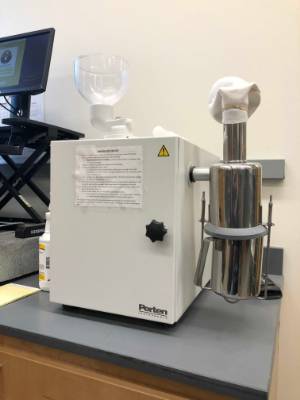 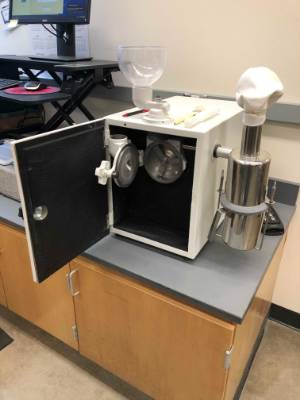 |
A Perten mill is used to finely mill grain before being tested for falling number
Sound barley has very low to no a-amylase present. With even a small amount of moisture at maturity modern North American varieties (which mostly have very little dormancy, an issue our breeding program is adressing) will start to germinate on the head. Small levels of this germination will produce a-amylase and will be very detrimental to malting and baking aspects of raw grain. This small level of damage may not be visible to the naked eye, but can easily be detected by the falling number test. Another instrument which is similar to Falling Number is a Rapid Visco Analyzer (RVA). Both instruments can reliably test for pre-harvest sprout damage- which one will be used for testing is more or less dependent n what's common in your region. Quality ranges for both tests can be found below.
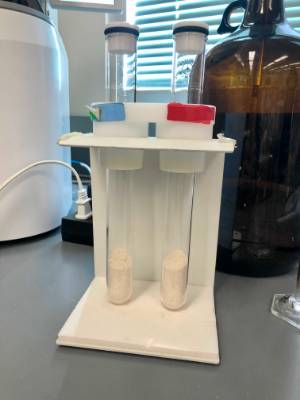 |
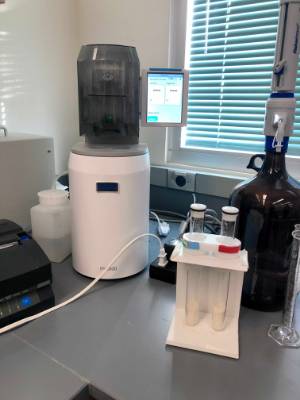 |
Samples are measured in duplicate. Two tubes have 7g of flour added. 25mLs water is added and the sample are vigourously shaken before going into the falling number analyzer - shown on the right.
| Falling Number | Rapid Visco Analyzer | |
| Sound Grain | >300 | >120 |
| Moderate PHS Damage | 125-300 | 50-120 |
| Severe PHS Damage | <125 | <50 |
| *Values used for barley |
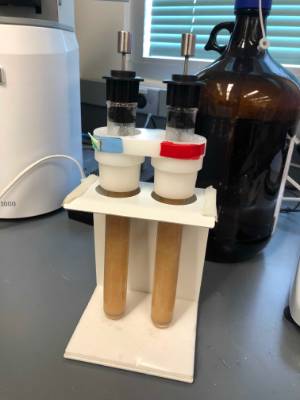 |
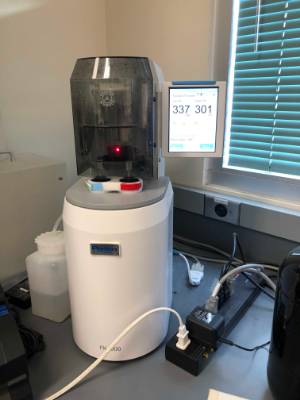 |
Gelatinized sample after measurment is complete. As each sample is measure in duplicate simultaneously the results must come back within 5% of each other. This sample was too variable and had to be measured a second time.
-------------------------------------
Falling number is a useful measure to asses sprouted grain, a baking product that is gaining popularity. Sprouted grain is intentionally sprouted to a relatively small degree, a process that can make a useful baking ingredient and which is believed to unlock nutritional aspects of the grain. The difference between intentionally sprouted grain and field sprouted is that the commercial process is much more uniform and able to control the sprouting to be very minimal.
